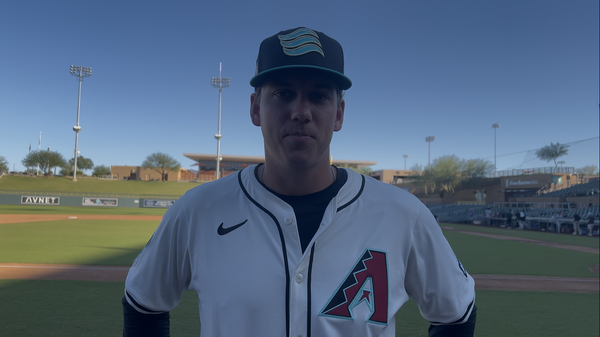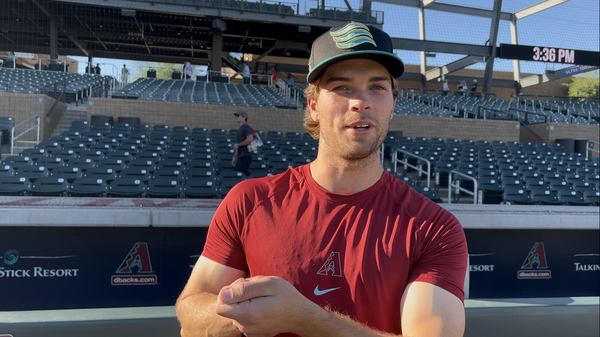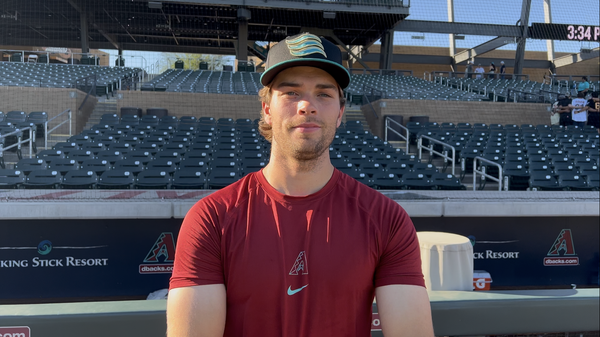John Curtiss Called Up: Arsenal Breakdown and Bullpen Fit
The veteran right-hander has been added to Arizona’s bullpen. Here’s what his pitch data and recent form suggest about his potential staying power.
The Diamondbacks reliever churn continues, with Tayler Scott designated for assignment and John Curtiss promoted from Triple-A Reno to take his place.
The move is hardly surprising, as Scott had given up runs in 4 of his 6 appearances. Curtiss, who performed well in Spring Training but got beat out for a roster spot by Shelby Miller, will get his chance.
Thanks for reading Mike's D-backs Report! Subscribe for free to receive new posts and support my work.
John Curtiss’ Pitch Arsenal and Results
Looking at Curtiss’ arsenal with Triple-A Reno, he relies a lot on a four-seamer and slider combination. The four-seamer averages 93.5 MPH, slightly below the MLB average for a right-handed pitcher (94.8). The two offerings account for nearly 90% of his pitches. He’ll mix in a cutter and a changeup a little more frequently against left-handed hitters.
The fastball gets a healthy amount of induced vertical break, averaging 15.4”, a strong number when factoring in the high-elevation parks in the Pacific Coast League. Reno, Salt Lake, El Paso, and Albuquerque are at an elevation of at least 3,500 feet above sea level.
When we isolate for the other six ballparks, Curtiss’ fastball averages 16.6” iVB and 6.6” horizontal break. That’s a more realistic expectation for how his fastball should move in the major leagues, where 29 of 30 ballparks are 1,200 feet or less in elevation.
Curtiss induces a lot of chases, with his 35.3% chase rate being more than 8% better than the Triple-A average of 27.2%. That doesn’t translate to a lot of swing-and-miss, with only a 24.1% overall whiff rate on swings. While he’s not getting strikeouts, it is translating to soft contact.
When hitters chase out of the zone, they have an average exit velocity of 78.5 MPH and a 14.8% hard-hit rate (exit velocities 95.0 MPH or greater). Against more disciplined and skilled hitters at the major league level, it might not be as easy. But if he can continue that trend, he has a chance to stick in the bullpen.
John Curtiss’ Potential Role in Arizona’s Bullpen
Curtiss will start with a low-leverage role in the bullpen, as has everyone else who’s been up and down this season. It’s unlikely that Torey Lovullo will use him in big situations unless the bullpen availability mandates as such.
It’s unlikely he’ll develop into a more significant role. He doesn’t miss a lot of bats, with a career strikeout rate of 22.7% in the majors, but he limits walks well. In Triple-A Reno, he posted a 19.7% strikeout rate and a 6.3% walk rate. The K-BB% of 13.4% is not too far off from the major league average of 14.1%.
The issue that has flown under the radar all season has been the front end of the bullpen, where there has been a constant churn of arms that have failed to get the job done. That was a weakness that general manager Mike Hazen identified as early as Spring Training. As the season has played out, not many arms have stepped up. Rookies Juan Morillo and Kyle Backhus have stepped up of late to not only help the unit in the short-term, but also the long-term.
Arizona’s bullpen has been once of the worst in MLB this season. Entering play on June 28, they are 27th in ERA (5.19) and 26th in FIP (4.51). By FanGraphs WAR, they are only slightly ahead of the Angels for the worst bullpen at -0.7 fWAR. By all metrics, they’ve stunk and should be the top reason behind their failed playoff run should that come to pass.
Thanks for reading Mike's D-backs Report! Subscribe for free to receive new posts and support my work.



